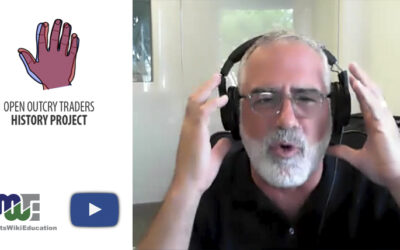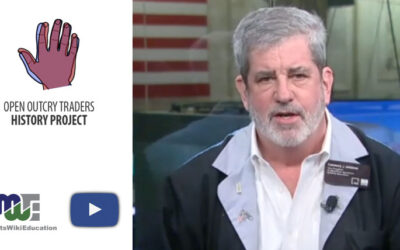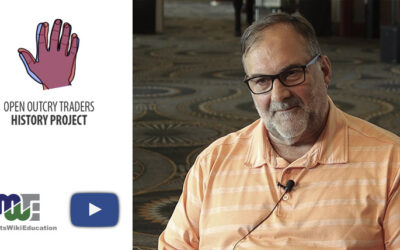When Kenny Polcari started out at the New York Stock Exchange, “It was paper and pencil until the turn of the century,” he said.
The exchange started to introduce handheld computers in the late 1990s, but it was only in beta, not full blown yet. Everyone was preparing for Y2K. When Y2K happened and the technology didn’t fail, Polcari said, there was a push on the industry to move forward with modernization. They converted all the stocks over to decimals alphabetically, one at a time, over a six-month period, starting with the stocks named A to D.
“So the A to D stocks were trading in decimals and the rest of the alphabet were traded in fractions. You had to change the way you thought depending on which stock you were trading. It was amazing, that transition,” Polcari said.
When the exchange had completely converted to decimals, the traders got handhelds, which were clunky, thick and heavy and ran on a battery with a wire that hung off your belt, he said. The battery only lasted 45 minutes, and the touch screen technology was awful. “All it did was receive orders,” Polcari said. “Now the handheld executes as well and the touchscreen technology is fantastic. But at that time, we thought this was really 21st century!”
A lot of 60-year-old guys, when given a handheld, said, “Screw it, I’m out,” and left the exchange, Polcari said. The technology developed slowly; in the late 1980s, the exchange created a headset so traders didn’t have to hold the phone in their hands. The big industrial phones became much more sleek, he said.
The most emotional day on the floor, Polcari said, was September 17, 2001, the day the market opened again after September 11.
“It was exciting because here we were right at the core of the country, capitalism, the U.S., everything it represents. It felt so fragile. At 4:00 when day ended, the market ended down 500 points, which was a huge move in the Dow at the time. And the market didn’t fail. That was a very powerful moment. You saw men just crying because of the tension everyone had been holding.”
He said he misses the days before 9-11 when you could go up to the visitors gallery and look down at the floor. “Anyone could buy a ticket and walk up there and see the action,” he said. “Now you can’t do that because some nut could walk in with a knapsack and blow the place up. To me that’s sad because I think of the NYSE as a national treasure. There is no place like it in the world.”











